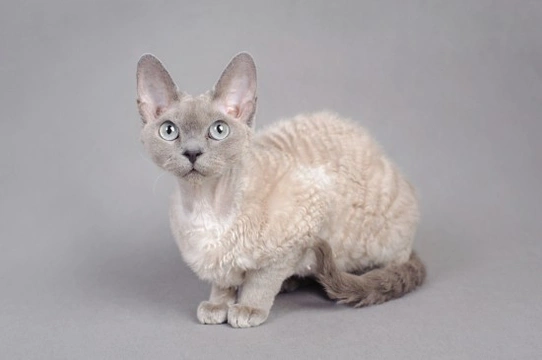
The Top Five Smallest Breeds of Cat
There is no denying the cute-appeal of the kitten, and while all cats are beautiful and adult cats have an undeniable grace and appeal all of their own, many cat owners retain wistful memories of the kitten stage of their cat’s life, and wish that their cats could have remained diminutive and petite for just a while longer! If you are considering getting a new cat or kitten and hope to bring home a cat from the smaller end of the scale that will not grow to a particularly large size and will keep a glancing resemblance to their small kitten-like appearance even when fully grown, you might be wondering what breeds of cat are a good bet.
While any breed of cat, even the breeds that tend to turn out larger cats, can produce smaller specimens on occasion and many domestic moggies are naturally on the small side, there are a few breeds of cat that are in general just that little bit smaller than your average feline. Check out our rundown of the five most popular recognised small breeds of cat.
1. The Singapura
The Singapura is considered to be the smallest overall breed of cat in the world, with most cats of the breed being as much as half the size of the average cat. The Singapura has a petite, delicate body with long ears and big eyes. They are very active and playful, and love to climb!
The Singapura is closely related to the Abyssinian cat, and while the breed became established in Japan, it transpires that the origins of the breed were American cats that were imported to Singapore, and then exported out again once the breed had become established.
2. The Munchkin
The Munchkin cat is a cat with a body that is only slightly smaller than most cats, but has particularly short legs, leading to them being much shorter than the average feline. The Munchkin is a relatively modern breed, only becoming established during the 1980’s. They are playful and active, and don’t let their short legs get in the way of them having fun! They are able to run and jump like a normal cat, although they may not be able to jump as far or as high. The Munchkin’s short legs came about due to a genetic mutation in the founder cats of the breed, which is sometimes associated with a range of hereditary and inherited health problems within the breed as a whole. If you ever consider buying or adopting a Munchkin cat, we strongly advise that you research further information on the health implications of the Munchkin cat breed and advice and opinions from animal welfare and authority organisations in the following Pets4Homes article.
3. The Cornish Rex
The Cornish Rex is on of the two unusually-coated cat breeds that make our list, and these cats are petite and playful with a very kitten-like appearance. The fur of their coats is very soft and wavy, and is referred to as down-hair in breeding circles. The shape of their face and ears is similar to that of the Siamese cat, and they share the Siamese breed traits of intelligence, talkativeness and a tendency to bond strongly with their owners.
4. The Devon Rex
The Devon Rex originates from very nearby to the Cornish Rex, and while there are undeniable similarities between the two breeds, they are nevertheless very distinct from each other. The Devon Rex is another petite breed with a big personality and high intelligence, and can even be taught to do tricks as a dog can! They have small, slender bodies and large bat-like ears. The Devon Rex again has a wavy or curly haired coat, but is distinctive from the Cornish Rex as it comes about due to a different genetic anomaly. Breeding a Devon Rex cat with a Cornish Rex cat will result in a cat with normal, non-curly fur, as the gene for each coat mutation itself will not be dominant when crossed with another different gene, even one that has the same effect! They also have very short whiskers, which may also be curled in appearance!
5. The American Curl
The American Curl comes in a range of sizes, but most cats of this breed are towards the smaller end of the scale. As well as being petite and generally appealing to look at from a size and proportion perspective, they are also distinctive thanks to the signature curling ears that give this breed their name. They need a little extra care to be taken of their ears by means of cleaning them off to keep them healthy, but are otherwise a low maintenance, healthy and active breed of cat. They are very easygoing and friendly, and also have a tendency to playfulness that makes them a good pick for families with older children.
Other small crossbreed and experimental small breed cats
All of the five cats listed above are recognised as formal breeds with at least one of the world’s governing feline authorities, such as the Governing Council of the Cat Fancy (GCCF) here in the UK. However, many other types and potential future breeds of small cat are currently at the formative or experimental stage of establishment, many of these consisting of Munchkin cats bred with a variety of different out crossings. Please note however that the GCCF do not recognise the Munchkin cat breed or any other cat breeds that have a mutation causing a harmful deformity that compromises the health and welfare of the breed.
Additional small breeds we might get to hear more of in the future include the Kinkalow (a cross between a Munchkin and an American Curl) the Napoleon (a cross between a Munchkin and a Persian) and the Lambkin, a cross between a Selkirk Rex and a Munchkin.



